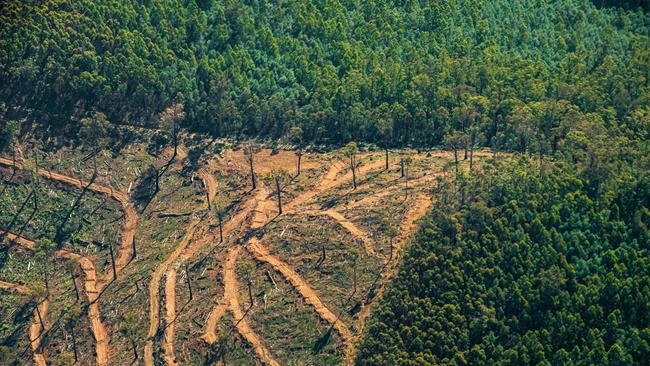Timber industry wants Albanese to take an axe to forest lock-up proposal
The timber industry wants the Albanese government to axe a proposed scheme that would allow states to generate carbon credits for locking up state forests.

The Queensland timber industry has called on the Albanese government to axe a proposed new scheme that would allow states to generate carbon credits for locking up public forests that would otherwise have been logged.
Put forward by the NSW government, the proposal was one of four new carbon credit methods that Climate Change Minister Chris Bowen agreed to prioritise for development last year.
The Tasmanian government and the federal coalition have opposed the proposal, which has been welcomed by conservation groups, and the native forestry industry says it would lead to job losses and wood shortages.
Officially called the Improved Native Forest Management in Multiple-use Public Forests method, the scheme would allow governments to claim carbon credits for not harvesting publicly owned forests for timber or allowing trees in them to grow older before cutting them down.
Proponents could earn a credit for each tonne of additional carbon dioxide stored.
Economic analysis conducted for the Australian Climate and Biodiversity Foundation estimated the NSW government alone could generate 1.5 million Australian Carbon Credit Units a year from the scheme, with each credit currently worth about $36 but expected to rise to $67 by 2030.
Companies are able to purchase the credits to offset their carbon emissions.
Timber Queensland chief executive Mick Stephens said the proposal was an ideologically influenced attempt to further restrict native forestry that would lead to perverse economic and social outcomes. “It proposes that by simply ceasing sustainable timber harvesting in public multiple-use forests, you can generate additional long-term abatement compared to the counterfactual of continued harvesting and storage of carbon in regrowing forests and harvested wood products,” he said.
“This is in direct contrast to many life cycle analyses of managed forests with sustainable timber harvesting, which show long-term sustained carbon benefits when the substitution of steel and concrete in the built environment is included along with carbon stored in forests and harvested wood products.”
Timber Queensland has called for the Albanese government to reject the proposed method and to “undertake a review into how the approval process seemingly ignored the counterfactual science”.
A scientific review published in November by former CSIRO chief research scientist of ecosystem sciences John Raison found that ending native forest harvesting would not provide lower long-term carbon emissions than sustainable management for wood production.
The NSW government is yet to present a detailed method to the federal Emissions Reduction Assurance Committee for assessment under the legislation, but the committee is expected to meet at the end of the month to discuss four proposed new methods.
A spokeswoman for Mr Bowen said the ERAC was “responsible for ensuring all proposed new methods meet the legislated integrity standards and result in genuine carbon abatement”.
Liberal senator for Tasmania Jonno Duniam said the proposed method was a “backdoor way” to stop native timber harvesting.
“Labor governments in Victoria and Western Australia have already banned native forestry, while many federal and state Labor MPs, as well as the Labor Environment Action Network, all want the remainder of the industry entirely scuppered,” he said.
“The consequences of its adoption for businesses and all ancillary workers like truckies that are engaged in this sustainable industry are dire.
“If we don’t get our hardwood from sustainable sources within Australia, it means we will have to import it from countries that don’t share our high environmental standards.”




To join the conversation, please log in. Don't have an account? Register
Join the conversation, you are commenting as Logout